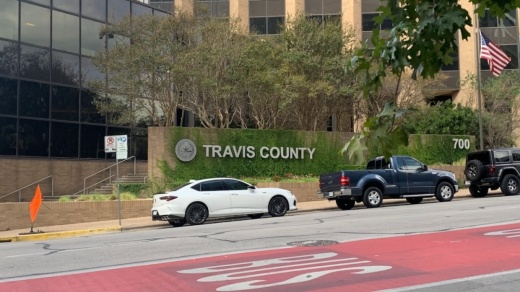At a May 3 presentation, county staff presented several factors that could be contributing to the increase in population.
The jail population has jumped from a pandemic low of roughly 1,400 in May 2021 to 2,095 as of early May this year, according to Valerie Hollier, a planning project manager with the county's justice and public safety division.
Hollier cited higher numbers of arrests for first- and second-degree felonies; longer average stay times; an increased focus on arresting individuals with aggravated assault warrants; changes to state bond law; longer wait times to move individuals to state hospitals; and pandemic-related slowdowns in courts.
According to a Travis County report tilted “Who is in Jail and Why,” 46% more individuals were in jail between May 13, 2021 and April 21, 2022.
The data shows an increase in individuals being held for other jurisdictions, awaiting pretrial services, waiting for beds in mental health hospitals and those already sentenced. Of the nine reasons an individual could be held in jail, the report only shows a decrease in state holds.
From 2019 to 2021, the average wait time for an individual in jail to get a bed in a state hospital has increased from roughly 50 days to 116 days, according to the presentation. Hollier said the increase is due to fewer beds being available and longer average stay times at hospitals.
Hollier said the lag in state hospital beds is affecting women more than men.
According to the data Hollier presented, there has been a 45% increase in first- or second-degree felony jail bookings in the first three months of this year compared to the same timespan in 2021.
At the same time, the average length of stay for individuals charged with first- or second-degree felonies has increased. Hollier said between April 2019 and April 2020, average length of stay times increased 50% and 43% for first- and second-degree felonies, respectively. Those times have decreased by 9% and 18%, respectively, from 2021 to 2022, but that still means the average length of stay is up from the prepandemic level.
Hollier did not provide information as to why the number of individuals being booked or the average length of stay for these charges was increasing.
Hollier also pointed toward Senate Bill 6, a state bond reform law that reduced the number of individuals who can get out on a personal recognizance, or PR, bond. The law expands the list of charges that precludes someone from getting out of jail on a PR bond, which is typically a lower cost than other forms of bond, according ot Hollier.
Hollier said the law has led to more people waiting for trial in Travis County jail. While cash bonds and surety bonds—those from bail bond agencies—have increased, the spike does not make up for the decreased number of people able to access PR bonds, Hollier said. In other words, more individuals have to wait in jail before trial.
According to her data, these strengthened laws disproportionately affect individuals of color.
A significant number of individuals in Travis County jail are being held pretrial. According to data from County Attorney Delia Garza’s office provided to commissioners during an April 26 meeting, 63% of the individuals in jail as of March 31 were awaiting pretrial.
“Pretrial detention has collateral consequences, such as loss of employment, residential instability and time away from family and the community,” the memo reads.
Travis County commissioners paused a program on April 26 that would have provided legal aid to some individuals awaiting pretrial.
The community weighs in
Following the presentation, several community members shared concerns with the rising jail rates.
“The [presentation] shows the jail is filled with individuals who have not been proven guilty,” said Bob Batlan, a member of Advocates for Social Justice.
He pointed to the large number of individuals in jail who have not been convicted of a crime. He also questioned the data showing that only a minority of individuals were able to get out on cash bail, meaning they were able to pay bail without a bond agency. He questioned if this means individuals are being forced to wait in jail because they are unable to afford to get out.
Several speakers pointed out that the data shows Black people are significantly overrepresented in the jail population compared to the population of Travis County and criticized the lack of coverage on racial inequity in the report.
“What we would love to see is a policy focused around [racial equity and decarceration] rather than explanations for how and why we got to this point,” said Amanda Woog, executive director at Texas Fair Defense Project. “Explanations that are surface level and when you start to scratch the surface they’re not entirely true.”
Commissioner Jeff Travillion asked for the jail population data to be disaggregated to further examine the disproportionalities.
The commissioners did not take any action on the agenda item but did ask staff to continue looking into the data behind the increase.





